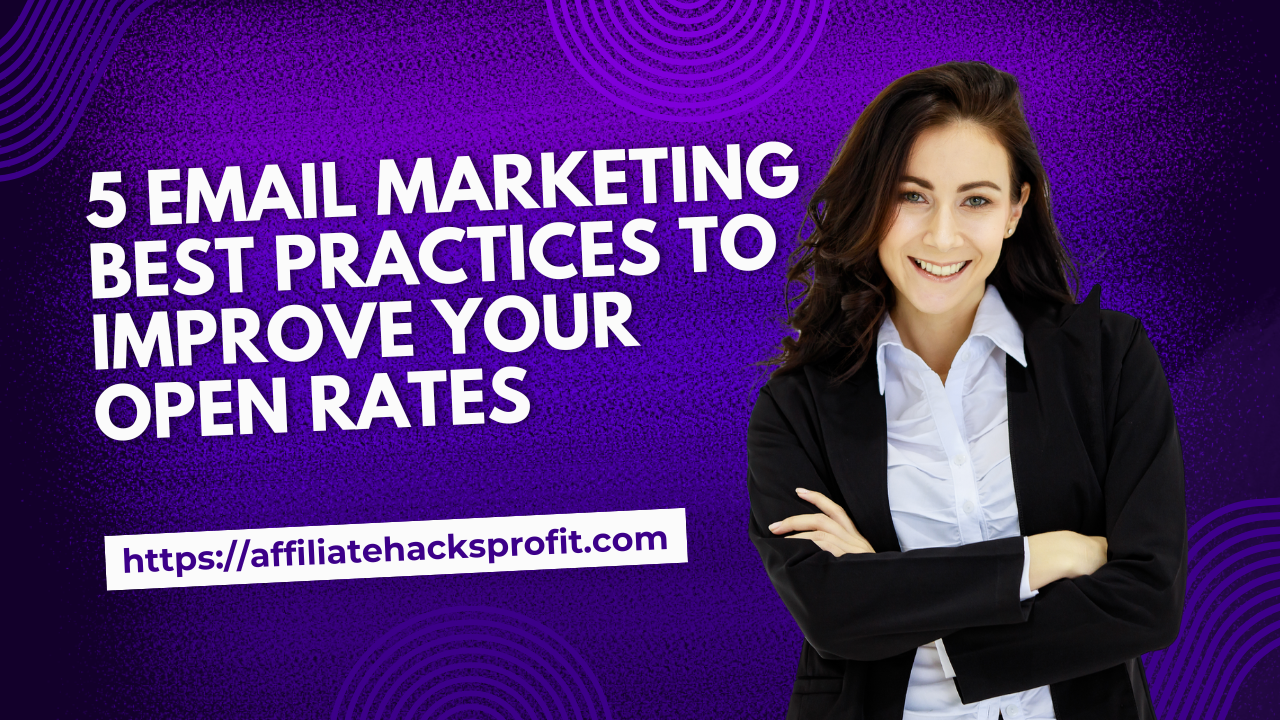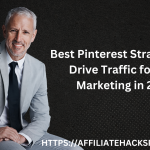Email marketing is like throwing a party—you’ve got the invitations ready, the snacks prepped, and the playlist on point. But what happens if no one shows up? In the world of email marketing, that’s what it feels like when your open rates are low. You send out emails filled with carefully crafted content, only to have them languish in inboxes, unopened and unloved. It’s a marketer’s nightmare! But don’t worry, you don’t need to start bribing your subscribers with virtual hors d’oeuvres just yet.
Improving your open rates isn’t rocket science, though it might sometimes feel that way. The key lies in mastering a few tried-and-true strategies that can transform your emails from overlooked to eagerly anticipated. In this article, we’ll explore five of the best practices that can help you break through the inbox clutter and get your emails the attention they deserve. So, grab your metaphorical party hat and let’s dive into the world of email marketing best practices—where the goal is to make your open rates as irresistible as the last slice of pizza at midnight.
Discover the Ultimate Method for Earning $100-$300 Daily – Dive into This FREE Video to Get Started >>>

Understand Your Audience
Understanding your audience is like being the DJ at your party—you wouldn’t blast heavy metal at a crowd that’s itching to dance to pop hits, right? The same goes for email marketing. To get your audience to hit that magical “open” button, you need to know what makes them tick. It’s not just about sending emails; it’s about sending the right emails to the right people at the right time. That’s where audience segmentation comes into play. By slicing and dicing your email list based on factors like demographics, purchase history, or even their cat’s favorite color (okay, maybe not that last one), you can send more personalized and relevant content that feels like it was made just for them.
But wait, there’s more! Personalization doesn’t stop at knowing who they are—it’s about making them feel like you get them. Use their first name, reference their past purchases, or suggest products they might actually want (instead of the random toaster that somehow made it into your last email). Think of it like tailoring a suit; the better the fit, the more likely they are to strut their stuff—and by “strut,” I mean open your email. In short, when you take the time to truly understand your audience, you’re not just another marketer in their inbox—you’re the one they actually want to hear from.
Craft Compelling Subject Lines
Crafting compelling subject lines is like creating the perfect teaser for a blockbuster movie—it’s all about hooking your audience from the start without giving away the whole plot. Your subject line is the first thing people see when your email lands in their inbox, and let’s be honest, it’s competing against a sea of other messages all vying for attention. So, how do you make sure your email gets the red-carpet treatment instead of the dreaded “mark as read” swipe?
First, keep it short and sweet. Think of your subject line as a headline for a tabloid magazine—something snappy that piques curiosity but doesn’t overwhelm. You’ve got just a few words to grab their attention, so make them count. Whether it’s creating a sense of urgency (“Don’t Miss Out—Sale Ends Tonight!”) or sparking curiosity (“You Won’t Believe What’s Inside”), your subject line should make the reader feel like they simply have to know more.
But beware of the dark side: spammy words. Words like “Free,” “Act Now,” or “Limited Time Offer” can trigger spam filters faster than you can say “junk mail.” Instead, go for language that feels natural and conversational. And don’t forget the golden rule of email marketing: A/B testing. What works for one audience might fall flat with another, so test different subject lines to see which ones hit the sweet spot. It’s like trying out different pickup lines—eventually, you’ll find the one that makes them stop and say, “Okay, you’ve got my attention.”
Optimize Your Send Times
Optimizing your send times is like finding the perfect moment to drop a punchline—timing is everything. You’ve got your killer email ready to go, but sending it at the wrong time can make it feel like telling a joke to an empty room. To make sure your email lands when your audience is most likely to engage, you need to pay attention to the clock. But don’t worry, you won’t need a PhD in time management, just a few smart strategies to get your timing right.
Discover the Ultimate Method for Earning $100-$300 Daily – Dive into This FREE Video to Get Started >>>
First off, let’s talk about the best days to hit send. Studies have shown that certain days of the week tend to have higher open rates—Tuesdays and Thursdays are often the sweet spots. Think of them as the Goldilocks days of the week—not too early, not too late, just right. Mondays can be a bit too hectic, with people drowning in post-weekend emails, and by Friday, everyone’s already mentally checked out for the weekend. But Tuesday and Thursday? That’s when your audience is in the groove, ready to engage with what you’ve got to say.
Then there’s the question of time. Sending an email at 3 AM might not be the best idea unless your audience is a bunch of night owls or international insomniacs. Instead, aim for times when people are likely to be checking their inbox—early mornings around 9 AM or late afternoons around 4 PM are usually prime time. And don’t forget about time zones! If your audience is spread across different regions, consider using an email marketing tool that automatically adjusts send times based on where your recipients are located. It’s like serving up breakfast at breakfast time and dinner at dinner time—your email is far more likely to be savored when it arrives at the right moment.
Ensure Mobile-Friendliness
Ensuring mobile-friendliness is like making sure your party outfit looks just as good in daylight as it does under the disco lights. With more and more people checking their emails on the go, your beautifully crafted message has to look great on any screen size—from the latest smartphone to a trusty old tablet. If your email doesn’t pass the mobile test, it’s like showing up to the party in mismatched socks—people might not stick around long enough to see what else you’ve got to offer.
First things first, you need to make sure your email design is responsive. This means your email automatically adjusts to fit the screen it’s being viewed on, whether it’s a tiny phone or a giant desktop monitor. It’s like having a one-size-fits-all outfit that somehow manages to look tailored no matter who’s wearing it. Responsive design ensures that your images don’t get cut off, your text isn’t squished into an unreadable mess, and your call-to-action buttons are big enough to tap without a magnifying glass.
And let’s not forget about the unsung hero of mobile email—the pre header text. This little snippet appears right after your subject line and can be the deciding factor between “open now” and “maybe later” (which, let’s face it, often means never). On mobile, the pre header text is even more crucial because it’s often the only other bit of your email that people see before deciding whether to click. Make sure it complements your subject line and gives just enough of a teaser to make them curious without spilling all the beans.
Discover the Ultimate Method for Earning $100-$300 Daily – Dive into This FREE Video to Get Started >>>
In a nutshell, making your emails mobile-friendly isn’t just a nice-to-have—it’s a must-have. When you ensure your emails look sharp on any device, you’re not just meeting your audience where they are—you’re making it easy for them to engage with your content, no matter where or when they’re checking their inbox. And that’s the kind of attention to detail that gets your emails opened and your message heard loud and clear.
Regularly Clean Your Email List
Regularly cleaning your email list is like tidying up your closet—it might feel like a chore, but it’s absolutely necessary if you want to keep things fresh and functional. Over time, your email list can get cluttered with inactive subscribers, outdated addresses, and people who’ve ghosted you harder than a bad Tinder date. Hanging on to these deadweight contacts doesn’t just hurt your open rates; it can also make your emails look like spam to inbox providers. So, just like you wouldn’t keep that 80s neon windbreaker you haven’t worn in decades (okay, maybe you would, but you get the point), it’s time to let go of the subscribers who aren’t showing you any love.
Start by identifying the inactive subscribers—those who haven’t opened your emails in months or even years. You might be tempted to hold on to them, thinking they’ll come around eventually, but realistically, they’re just dragging down your overall performance. Removing them from your list can actually boost your engagement rates, making your emails more appealing to both subscribers and inbox algorithms. It’s like realizing that letting go of that old jacket makes room for something new and stylish that you’ll actually use.
But wait—before you start the purge, consider running a re-engagement campaign. This is your last-ditch effort to win back those who’ve lost interest. Send them a special email, maybe with a catchy subject line like “We Miss You!” or “Is This Goodbye?” If they still don’t bite, it’s probably time to part ways. Think of it like giving them one last chance to RSVP before you strike them from the guest list.
In the end, a clean email list is a happy email list. By regularly pruning your contacts, you ensure that your messages are reaching people who actually want to hear from you. Plus, it keeps your email marketing efforts lean, mean, and more effective than ever. So go ahead, grab that digital dustpan, and start sweeping away the cobwebs—it’s time to keep your list as sharp and polished as your best pair of shoes.

Conclusion
Wrapping up an email marketing strategy session is like delivering the final toast at a party—you want to leave everyone feeling inspired, ready to take action, and maybe even a little excited about what’s to come. So, let’s recap what we’ve covered. We’ve explored the ins and outs of improving your open rates with some rock-solid best practices. From getting to know your audience like you’re their favorite DJ, to crafting subject lines that are as irresistible as a plot twist, you’ve got the tools you need to turn those unopened emails into the star of the inbox.
But remember, email marketing isn’t a one-and-done deal. It’s more like nurturing a relationship—you’ve got to keep things fresh, relevant, and timely. Keep experimenting with send times, make sure your emails look stunning on mobile, and don’t be afraid to say goodbye to subscribers who’ve checked out. With these strategies in your back pocket, your open rates will be on the rise, and your emails will be the ones people can’t wait to open.
Discover the Ultimate Method for Earning $100-$300 Daily – Dive into This FREE Video to Get Started >>>
So, here’s to turning your email marketing from a background noise into a showstopper. Go ahead and put these best practices to work, and watch as your emails start getting the attention they deserve. And who knows? You might just become the life of the email marketing party. Cheers to that!
Thank you for reading my article “5 Email Marketing Best Practices To Improve Your Open Rates” till the end. See you in another.











